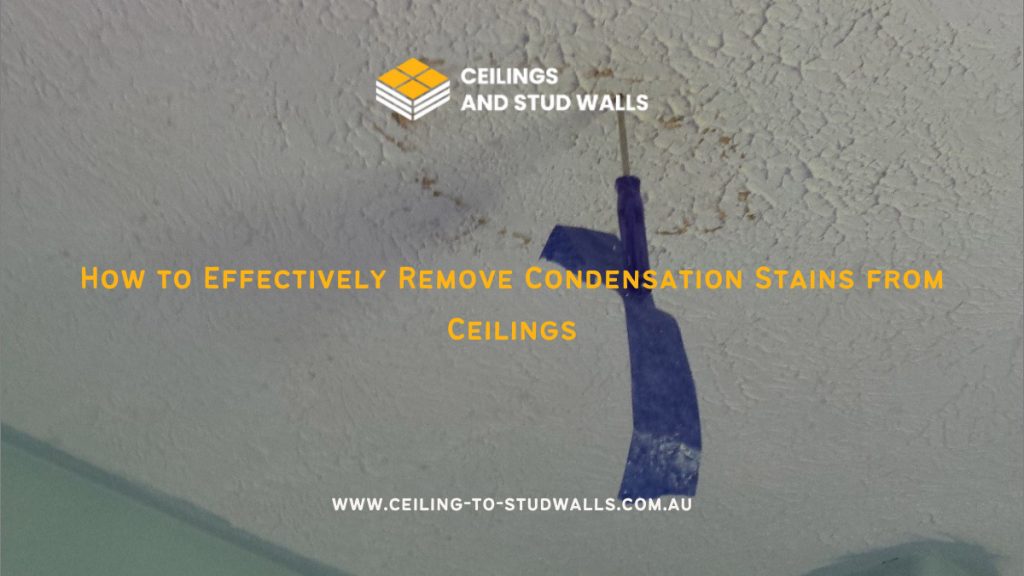
To prevent further staining and potential damage, it’s crucial to identify and address the cause of the water stain promptly. Even if the stain appears dry, signs indicating the need for ceiling leak repair include the subtle yet persistent menace of ceiling condensation stains, which can often be a precursor to more significant issues.
These stains not only compromise the aesthetic appeal of your ceiling but may also indicate underlying moisture-related problems that require timely intervention. By attending to ceiling condensation stains promptly, you can mitigate the risk of escalated damage and maintain a safe and visually pleasing environment.
Addressing the root cause of these stains ensures a comprehensive solution that goes beyond surface aesthetics, safeguarding your home from potential structural or electrical complications. So, whether it’s a leaky roof, faulty heating system, or plumbing issue, a proactive approach to ceiling water stains, including the often-overlooked ceiling condensation stains, is essential for the long-term health of your property.
Ceiling Leakage Indicators
Don’t delay addressing a problem that will only worsen over time. Identify the source of your ceiling water stains with these common culprits:
- Roof Cavity Condensation
Excessive moisture in the attic or roof cavity can lead to water stains on upper-level ceilings. Inadequate ventilation is often the culprit, potentially causing mould issues as well.
For expert solutions, contact Ceilings and Stud Walls. - Leaking Pipes
Ceiling stains may result from leaking pipes in an upstairs bathroom. Immediate attention to this issue is essential.
Leaking pipes can cause water damage that extends beyond the visible stains. For professional assistance, don’t hesitate to contact us. - Grouting and Caulking Issues
Worn-out grout or caulking around tubs, showers, or toilets can allow water pooling, leading to stains on downstairs ceilings. Resolve this problem by re-caulking. - Roofing Problems
Roof leaks may stem from missing shingles or loose flashing during rainstorms. Conduct a thorough interior attic inspection to identify and rectify these issues.
Potential Side Effects of Leaks
Leaks can cause damage to rafters, ceiling joists, walls, or exterior trim, leading to structural issues. Additionally, water intrusion can damage attic insulation, resulting in higher utility bills and posing mould risks.
Avoid a simple paint job; damaged areas must be removed, and mould spores killed to prevent regrowth. Ensure thorough drying and cleaning by hiring professionals before painting and replacing affected components.
